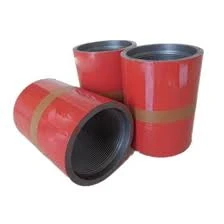- Afrikaans
- Albanian
- Amharic
- Arabic
- Armenian
- Azerbaijani
- Basque
- Belarusian
- Bengali
- Bosnian
- Bulgarian
- Catalan
- Cebuano
- Corsican
- Croatian
- Czech
- Danish
- Dutch
- English
- Esperanto
- Estonian
- Finnish
- French
- Frisian
- Galician
- Georgian
- German
- Greek
- Gujarati
- Haitian Creole
- hausa
- hawaiian
- Hebrew
- Hindi
- Miao
- Hungarian
- Icelandic
- igbo
- Indonesian
- irish
- Italian
- Japanese
- Javanese
- Kannada
- kazakh
- Khmer
- Rwandese
- Korean
- Kurdish
- Kyrgyz
- Lao
- Latin
- Latvian
- Lithuanian
- Luxembourgish
- Macedonian
- Malgashi
- Malay
- Malayalam
- Maltese
- Maori
- Marathi
- Mongolian
- Myanmar
- Nepali
- Norwegian
- Norwegian
- Occitan
- Pashto
- Persian
- Polish
- Portuguese
- Punjabi
- Romanian
- Russian
- Samoan
- Scottish Gaelic
- Serbian
- Sesotho
- Shona
- Sindhi
- Sinhala
- Slovak
- Slovenian
- Somali
- Spanish
- Sundanese
- Swahili
- Swedish
- Tagalog
- Tajik
- Tamil
- Tatar
- Telugu
- Thai
- Turkish
- Turkmen
- Ukrainian
- Urdu
- Uighur
- Uzbek
- Vietnamese
- Welsh
- Bantu
- Yiddish
- Yoruba
- Zulu
pump seating nipple
Understanding the Pump Seating Nipple A Critical Component in Pump Systems
In the realm of fluid management and pumping systems, the term pump seating nipple refers to a vital component that plays a crucial role in ensuring the efficiency and performance of various pumping applications. This article delves into the significance, design, and proper maintenance of pump seating nipples, highlighting their importance for industry professionals and businesses reliant on effective fluid transfer systems.
What is a Pump Seating Nipple?
A pump seating nipple is a device used primarily in oil and gas operations, although it can also be found in other fluid systems. It serves as a connection point where a pump meets the tubing or casing, effectively sealing the interface and allowing for safe and efficient fluid transfer. The design of the seating nipple typically incorporates a series of threads or grooves that facilitate secure attachment to both the pump and adjacent piping.
Importance of Pump Seating Nipples
The pump seating nipple is vital for several reasons
1. Secure Connection By creating a tight, secure connection between the pump and the surrounding piping, the seating nipple prevents leaks and ensures that the system operates under optimal conditions. This is particularly crucial in high-pressure applications, where any failure could lead to catastrophic results.
2. Pressure Regulation Pump seating nipples are designed to withstand significant pressure differentials. This ensures that the fluid being pumped does not escape the system and that the pump operates efficiently without the risk of backup or cavitation.
3. Facilitating Maintenance The design of seating nipples makes it easier to replace or service pumps without extensive disassembly of the entire system, reducing downtime and maintenance costs. This aspect is particularly beneficial in industries where time is of the essence.
4. Material Compatibility Depending on the application and the fluids being handled, pump seating nipples can be fabricated from various materials, including carbon steel, stainless steel, and specialized alloys. This flexibility allows for tailored solutions that meet the specific needs of different operational environments.
Design and Specification
pump seating nipple

The design and specifications of a pump seating nipple can vary significantly based on the application requirements. Generally, industries focus on factors such as
- Size and Thread Type The dimensions and thread specifications must match the pump and piping systems to ensure compatibility and prevent leaks. - Pressure Ratings The seating nipple must be rated to handle the maximum expected pressure to avoid failure during operation. - Temperature Tolerance Depending on the fluid’s temperature, the material selected should withstand thermal stress without degrading.
When selecting a pump seating nipple, it’s essential to consult with engineers or manufacturers to ensure that the specifications align with the operational requirements.
Best Practices for Maintenance
To ensure the longevity and efficiency of pump seating nipples, several best practices should be observed
1. Regular Inspections Periodic inspections of pump seating nipples for wear, corrosion, or leakage can help identify issues before they escalate into more serious problems.
2. Proper Torque Specifications Following the manufacturer's recommended torque settings during installation can prevent mechanical failures or damage to the nipple.
3. Fluid Compatibility Checks It’s crucial to ensure that the materials used in the seating nipple are compatible with the fluids being pumped to prevent corrosion or degradation.
4. Documentation and Records Keeping detailed records of inspections, maintenance, and any changes made can provide insight into the system's performance and help predict future needs.
Conclusion
In conclusion, the pump seating nipple is an essential component that plays a significant role in the efficiency, safety, and reliability of pumping systems across various industries. By understanding its function and adhering to best practices for maintenance, professionals can ensure that their fluid management systems operate smoothly and effectively. As technology continues to advance, staying informed about developments in pump seating nipple design and application will only enhance operational performance and reliability.
-
Tubing Pup Joints: Essential Components for Oil and Gas OperationsNewsJul.10,2025
-
Pup Joints: Essential Components for Reliable Drilling OperationsNewsJul.10,2025
-
Pipe Couplings: Connecting Your World EfficientlyNewsJul.10,2025
-
Mastering Oilfield Operations with Quality Tubing and CasingNewsJul.10,2025
-
High-Quality Casing Couplings for Every NeedNewsJul.10,2025
-
Boost Your Drilling Efficiency with Premium Crossover Tools & Seating NipplesNewsJul.10,2025







